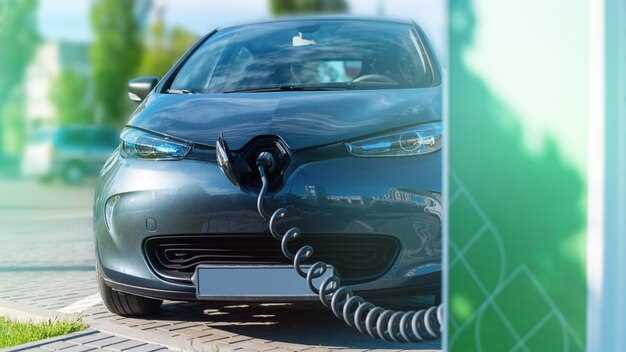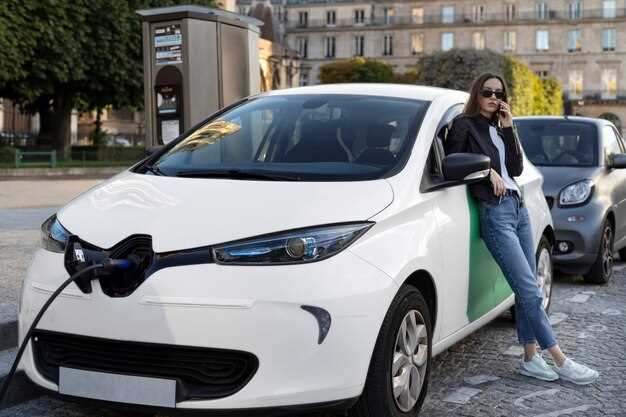
The shift towards electric vehicles (EVs) is gaining momentum as more consumers seek sustainable and cost-effective transportation options. Among the various options available, finding affordable electric cars has become a priority for many drivers who wish to capitalize on the long-term savings that come with owning an EV. By 2025, the market is expected to offer several budget-friendly choices that provide excellent value without compromising on performance or features.
As advancements in technology continue to lower production costs and increase the efficiency of electric vehicles, consumers can look forward to a wider range of affordable models that meet diverse needs. These vehicles not only reduce greenhouse gas emissions but can also significantly cut fuel and maintenance expenses, making them an appealing option for those looking to save money in the long run.
In this article, we will explore the top contenders in the affordable electric car segment for 2025, highlighting their key features, expected pricing, and the potential savings they offer. Whether you are a first-time buyer or seeking to upgrade your current vehicle, this guide will provide insights into the best EVs that balance affordability and functionality, paving the way for a greener tomorrow.
Best Budget-Friendly EV Models Under $30,000

As the electric vehicle market continues to expand, finding affordable options becomes increasingly important for consumers seeking to make the switch. Here are some of the best budget-friendly electric cars available in 2025, all priced under $30,000, offering significant savings on fuel and maintenance costs.
-
1. Nissan Leaf
The Nissan Leaf has long been a staple in the budget EV segment. With a range of up to 150 miles on a single charge, it provides excellent daily driving capabilities. It’s equipped with user-friendly technology and offers spacious seating for passengers.
-
2. Chevrolet Bolt EV
The Chevrolet Bolt EV stands out with an impressive range of up to 250 miles. Its compact design makes it easy to maneuver in urban environments, while its spacious interior ensures comfort for both drivers and passengers. The Bolt is known for its energetic performance and affordability.
-
3. Hyundai Ioniq 5
The Ioniq 5 is a stylish and versatile electric SUV that combines modern design with practical features. With a starting price under $30,000, it offers a range of about 220 miles and rapid charging capabilities, helping drivers achieve significant savings on their electric bills.
-
4. Kia K5 EV
The Kia K5 EV is a newly introduced model that offers a great blend of performance and affordability. With a projected range of 230 miles and a welcoming interior filled with tech features, the K5 stands out in the affordable electric segment.
-
5. Ford Mustang Mach-E
This electric SUV brings the Mustang legacy into the EV era with a sporty performance. Starting at just under $30,000, the Mach-E offers an estimated range of 230 miles, spacious cargo room, and advanced driver assistance features, perfect for budget-conscious buyers.
These electric models not only enhance your driving experience with cutting-edge technology but also provide substantial savings on fuel and maintenance costs. Choosing an affordable EV is a smart investment toward a sustainable future.
Understanding Incentives and Rebates for Electric Vehicle Purchases

As electric vehicles (EVs) gain popularity, various incentives and rebates are increasingly offered to encourage consumers to make the switch from traditional gasoline cars. These programs can significantly contribute to savings, making the purchase of an electric vehicle more accessible and affordable.
Federal Incentives: In the United States, the federal government provides tax credits for the purchase of new electric vehicles. These credits can amount to up to $7,500, depending on the model and battery capacity of the EV. However, eligibility varies as manufacturers approach a sales threshold, which may limit the credits available for some popular models.
State and Local Programs: Many states and local governments offer additional incentives, which can include tax rebates, grants, and even cash back upon purchase. These programs vary widely; for example, some states provide rebates that can reach several thousand dollars, while others might offer perks like access to carpool lanes or free charging station installations.
Utility Company Incentives: Electric utilities often have programs designed to promote the use of EVs among their customers. These can include discounts on electricity rates during off-peak hours for EV owners, helping to lower the overall cost of charging your vehicle. Some utilities also offer rebates for installing home charging stations, further enhancing savings.
Considerations for Buyers: When evaluating the total savings from purchasing an EV, it’s essential to consider the various incentives available. Buyers should research both federal and state programs, as well as utility offerings, to maximize their benefits. Additionally, understanding the specific requirements for each incentive can help avoid any surprises during the purchasing process.
In conclusion, taking advantage of incentives and rebates can lead to substantial savings on electric vehicle purchases. By leveraging these programs, buyers can make a more informed financial decision, easing the transition to an electric future.
Calculating Long-Term Savings on Electric Vehicle Ownership
When considering the switch to an electric vehicle (EV), it’s essential to calculate the long-term savings that come with affordable options in the market. While the initial purchase price of an EV may seem higher than a traditional gasoline car, various factors contribute to significant savings over time.
One of the primary savings comes from fuel costs. Charging an EV is generally cheaper than refueling a gasoline vehicle. For instance, the average cost of electricity per kilowatt-hour (kWh) is lower than gasoline prices, allowing owners to save substantially on fuel expenses. On average, it can cost about 50-70% less to fuel an EV compared to a conventional vehicle.
Maintenance expenses also play a crucial role in overall savings. EVs have fewer moving parts and do not require oil changes, resulting in lower maintenance costs. Moreover, regenerative braking systems in EVs reduce brake wear, leading to less frequent replacements. Over time, these savings on maintenance can accumulate to a significant amount.
Additionally, many governments offer incentives for EV ownership, including tax credits, rebates, and exemptions from certain fees. These incentives can further reduce the initial costs associated with purchasing an affordable electric car, enhancing overall savings.
Insurance costs for EVs can also be lower, depending on the model and the owner’s driving habits. Some insurance companies offer discounts for electric vehicle owners, recognizing the reduced likelihood of accidents and lower repair costs due to the advanced technology used in EVs.
In summary, calculating the long-term savings of electric vehicle ownership reveals that despite a higher upfront cost, EVs provide various economical advantages. By factoring in fuel, maintenance, incentives, and insurance savings, potential buyers can confidently consider affordable EVs as a financially wise choice for the future.




